RBS 2010 Annual Report Download - page 135
Download and view the complete annual report
Please find page 135 of the 2010 RBS annual report below. You can navigate through the pages in the report by either clicking on the pages listed below, or by using the keyword search tool below to find specific information within the annual report.-
 1
1 -
 2
2 -
 3
3 -
 4
4 -
 5
5 -
 6
6 -
 7
7 -
 8
8 -
 9
9 -
 10
10 -
 11
11 -
 12
12 -
 13
13 -
 14
14 -
 15
15 -
 16
16 -
 17
17 -
 18
18 -
 19
19 -
 20
20 -
 21
21 -
 22
22 -
 23
23 -
 24
24 -
 25
25 -
 26
26 -
 27
27 -
 28
28 -
 29
29 -
 30
30 -
 31
31 -
 32
32 -
 33
33 -
 34
34 -
 35
35 -
 36
36 -
 37
37 -
 38
38 -
 39
39 -
 40
40 -
 41
41 -
 42
42 -
 43
43 -
 44
44 -
 45
45 -
 46
46 -
 47
47 -
 48
48 -
 49
49 -
 50
50 -
 51
51 -
 52
52 -
 53
53 -
 54
54 -
 55
55 -
 56
56 -
 57
57 -
 58
58 -
 59
59 -
 60
60 -
 61
61 -
 62
62 -
 63
63 -
 64
64 -
 65
65 -
 66
66 -
 67
67 -
 68
68 -
 69
69 -
 70
70 -
 71
71 -
 72
72 -
 73
73 -
 74
74 -
 75
75 -
 76
76 -
 77
77 -
 78
78 -
 79
79 -
 80
80 -
 81
81 -
 82
82 -
 83
83 -
 84
84 -
 85
85 -
 86
86 -
 87
87 -
 88
88 -
 89
89 -
 90
90 -
 91
91 -
 92
92 -
 93
93 -
 94
94 -
 95
95 -
 96
96 -
 97
97 -
 98
98 -
 99
99 -
 100
100 -
 101
101 -
 102
102 -
 103
103 -
 104
104 -
 105
105 -
 106
106 -
 107
107 -
 108
108 -
 109
109 -
 110
110 -
 111
111 -
 112
112 -
 113
113 -
 114
114 -
 115
115 -
 116
116 -
 117
117 -
 118
118 -
 119
119 -
 120
120 -
 121
121 -
 122
122 -
 123
123 -
 124
124 -
 125
125 -
 126
126 -
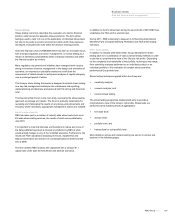 127
127 -
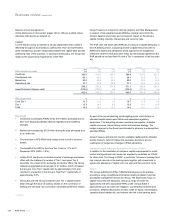 128
128 -
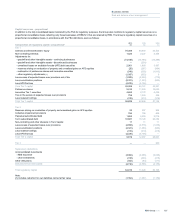 129
129 -
 130
130 -
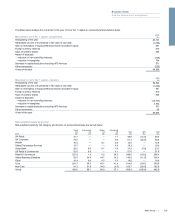 131
131 -
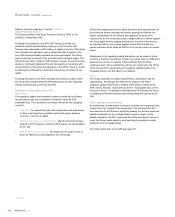 132
132 -
 133
133 -
 134
134 -
 135
135 -
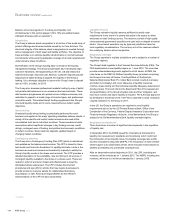 136
136 -
 137
137 -
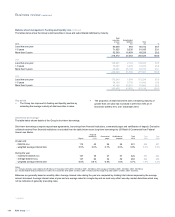 138
138 -
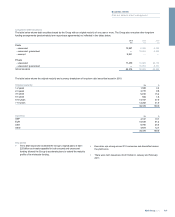 139
139 -
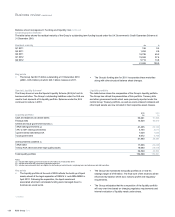 140
140 -
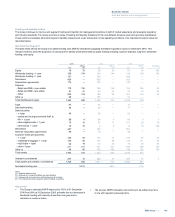 141
141 -
 142
142 -
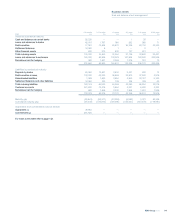 143
143 -
 144
144 -
 145
145 -
 146
146 -
 147
147 -
 148
148 -
 149
149 -
 150
150 -
 151
151 -
 152
152 -
 153
153 -
 154
154 -
 155
155 -
 156
156 -
 157
157 -
 158
158 -
 159
159 -
 160
160 -
 161
161 -
 162
162 -
 163
163 -
 164
164 -
 165
165 -
 166
166 -
 167
167 -
 168
168 -
 169
169 -
 170
170 -
 171
171 -
 172
172 -
 173
173 -
 174
174 -
 175
175 -
 176
176 -
 177
177 -
 178
178 -
 179
179 -
 180
180 -
 181
181 -
 182
182 -
 183
183 -
 184
184 -
 185
185 -
 186
186 -
 187
187 -
 188
188 -
 189
189 -
 190
190 -
 191
191 -
 192
192 -
 193
193 -
 194
194 -
 195
195 -
 196
196 -
 197
197 -
 198
198 -
 199
199 -
 200
200 -
 201
201 -
 202
202 -
 203
203 -
 204
204 -
 205
205 -
 206
206 -
 207
207 -
 208
208 -
 209
209 -
 210
210 -
 211
211 -
 212
212 -
 213
213 -
 214
214 -
 215
215 -
 216
216 -
 217
217 -
 218
218 -
 219
219 -
 220
220 -
 221
221 -
 222
222 -
 223
223 -
 224
224 -
 225
225 -
 226
226 -
 227
227 -
 228
228 -
 229
229 -
 230
230 -
 231
231 -
 232
232 -
 233
233 -
 234
234 -
 235
235 -
 236
236 -
 237
237 -
 238
238 -
 239
239 -
 240
240 -
 241
241 -
 242
242 -
 243
243 -
 244
244 -
 245
245 -
 246
246 -
 247
247 -
 248
248 -
 249
249 -
 250
250 -
 251
251 -
 252
252 -
 253
253 -
 254
254 -
 255
255 -
 256
256 -
 257
257 -
 258
258 -
 259
259 -
 260
260 -
 261
261 -
 262
262 -
 263
263 -
 264
264 -
 265
265 -
 266
266 -
 267
267 -
 268
268 -
 269
269 -
 270
270 -
 271
271 -
 272
272 -
 273
273 -
 274
274 -
 275
275 -
 276
276 -
 277
277 -
 278
278 -
 279
279 -
 280
280 -
 281
281 -
 282
282 -
 283
283 -
 284
284 -
 285
285 -
 286
286 -
 287
287 -
 288
288 -
 289
289 -
 290
290 -
 291
291 -
 292
292 -
 293
293 -
 294
294 -
 295
295 -
 296
296 -
 297
297 -
 298
298 -
 299
299 -
 300
300 -
 301
301 -
 302
302 -
 303
303 -
 304
304 -
 305
305 -
 306
306 -
 307
307 -
 308
308 -
 309
309 -
 310
310 -
 311
311 -
 312
312 -
 313
313 -
 314
314 -
 315
315 -
 316
316 -
 317
317 -
 318
318 -
 319
319 -
 320
320 -
 321
321 -
 322
322 -
 323
323 -
 324
324 -
 325
325 -
 326
326 -
 327
327 -
 328
328 -
 329
329 -
 330
330 -
 331
331 -
 332
332 -
 333
333 -
 334
334 -
 335
335 -
 336
336 -
 337
337 -
 338
338 -
 339
339 -
 340
340 -
 341
341 -
 342
342 -
 343
343 -
 344
344 -
 345
345 -
 346
346 -
 347
347 -
 348
348 -
 349
349 -
 350
350 -
 351
351 -
 352
352 -
 353
353 -
 354
354 -
 355
355 -
 356
356 -
 357
357 -
 358
358 -
 359
359 -
 360
360 -
 361
361 -
 362
362 -
 363
363 -
 364
364 -
 365
365 -
 366
366 -
 367
367 -
 368
368 -
 369
369 -
 370
370 -
 371
371 -
 372
372 -
 373
373 -
 374
374 -
 375
375 -
 376
376 -
 377
377 -
 378
378 -
 379
379 -
 380
380 -
 381
381 -
 382
382 -
 383
383 -
 384
384 -
 385
385 -
 386
386 -
 387
387 -
 388
388 -
 389
389 -
 390
390 -
 391
391 -
 392
392 -
 393
393 -
 394
394 -
 395
395 -
 396
396 -
 397
397 -
 398
398 -
 399
399 -
 400
400 -
 401
401 -
 402
402 -
 403
403 -
 404
404 -
 405
405 -
 406
406 -
 407
407 -
 408
408 -
 409
409 -
 410
410 -
 411
411 -
 412
412 -
 413
413 -
 414
414 -
 415
415 -
 416
416 -
 417
417 -
 418
418 -
 419
419 -
 420
420 -
 421
421 -
 422
422 -
 423
423 -
 424
424 -
 425
425 -
 426
426 -
 427
427 -
 428
428 -
 429
429 -
 430
430 -
 431
431 -
 432
432 -
 433
433 -
 434
434 -
 435
435 -
 436
436 -
 437
437 -
 438
438 -
 439
439 -
 440
440 -
 441
441 -
 442
442 -
 443
443 -
 444
444 -
 445
445
 |
 |

Structure of prudential regulation in the UK
Following the consultation by HM Treasury on ‘A new approach to
financial regulation’ in 2010, the government subsequently published
further detailed proposals to give the Bank of England responsibility for
prudential regulation, and to create a new Consumer Protection and
Markets Authority to protect the interests of bank customers.
Increase in the level of customer protection under Financial Services
Compensation Scheme
The European Commission has introduced a uniform compensation level
of €100,000 across Member States from 1 January 2011. The sterling
equivalent was confirmed by HM Treasury as £85,000.
Independent Commission on Banking
The Independent Commission on Banking has published responses from
banks, academics and other interested parties to its initial consultation.
In its summary of the evidence received the Commission noted that there
was considerable interest, both positive and negative, in the question of
splitting retail and investment banks. The Commission plans to publish its
interim report in April.
FSA Code on remuneration
In July 2009 the European Commission adopted a proposal to further
amend the Capital Requirements Directive (CRD) which included
proposals on remuneration policies. This was subsequently voted for and
approved (CRD III).
CRD III required the Commission of European Banking Supervisors
(CEBS) to issue guidelines on sound remuneration policies which comply
with its principles and these were issued on 10 December 2010 (the
“Guidelines”).
The FSA amended its Remuneration Code to take into account the
Guidelines and published its policy statement on remuneration on 17
December 2010.
The Group is required to be compliant with the FSA Remuneration Code
with effect from 1 January 2011:
xas a “Tier 1” organisation, the Code applies to all employees on a
global basis;
xthere are specific remuneration and governance requirements in
relation to “Code Staff”; and
xfollowing an ongoing review of our remuneration arrangements and
discussions with the FSA, 2011 RBS remuneration arrangements
are fully compliant with the FSA Remuneration Code.
Bank levy
In his 22 June 2010 budget statement, the Chancellor announced that the
UK Government will introduce an annual bank levy. The Finance Bill
2011 contains details of how the levy will be calculated and collected.
The levy will be collected through the existing quarterly corporation tax
collection mechanism starting with payment dates on or after the date the
Finance Bill 2011 receives Royal Assent. Further information is included
on page 368.
Stress and scenario testing
Stress testing forms part of the Group’s risk and capital framework and is
an integral component of Basel II. As a key risk management tool, stress
testing highlights to senior management potential adverse unexpected
outcomes related to a mixture of risks and provides an indication of how
much capital might be required to absorb losses, should adverse
scenarios occur. Stress testing is used at both a divisional and Group
level to assess risk concentrations, estimate the impact of stressed
earnings, impairments and write-downs on capital. It determines the
overall capital adequacy under a variety of adverse scenarios. The
principal business benefits of the stress testing framework include:
understanding the impact of recessionary scenarios; assessing material
risk concentrations; and forecasting the impact of market stress and
scenarios on the Group’s balance sheet liquidity.
Aseries of stress events are monitored on a regular basis to assess the
potential impact of an extreme yet plausible event on the Group. There
are four core elements of scenario stress testing:
xmacroeconomic stress testing considers the impact on both
earnings and capital for a range of scenarios. They entail multi-year
systemic shocks to assess the Group’s ability to meet its capital
requirements and liabilities as they fall due in a downturn in the
business cycle and/or macroeconomic environment;
xenterprise-wide stress testing considers scenarios that are not
macroeconomic in nature but are sufficiently broad to impact across
multiple risks or divisions and are likely to affect earnings, capital
and funding;
xcross-divisional stress testing includes scenarios which have
impacts across divisions relating to sensitivity to a common risk
factor(s). This would include, for example, sector based stress
testing across corporate portfolios and sensitivity analysis to stress
in market factors. These stress tests are discussed with senior
divisional management and are reported to senior committees
across the Group; and
xdivisional and risk specific stress testing is undertaken to support
risk identification and management. Examples include the daily
product based stress testing using a hybrid of hypothetical and
historical scenarios within market risk.
Portfolio analysis, using historic performance and forward looking
indicators of change, uses stress testing to facilitate the measurement of
potential exposure to events and seeks to quantify the impact of an
adverse change in factors which drive the performance and profitability of
aportfolio.
133RBS Group 2010
Business review
Risk and balance sheet management
